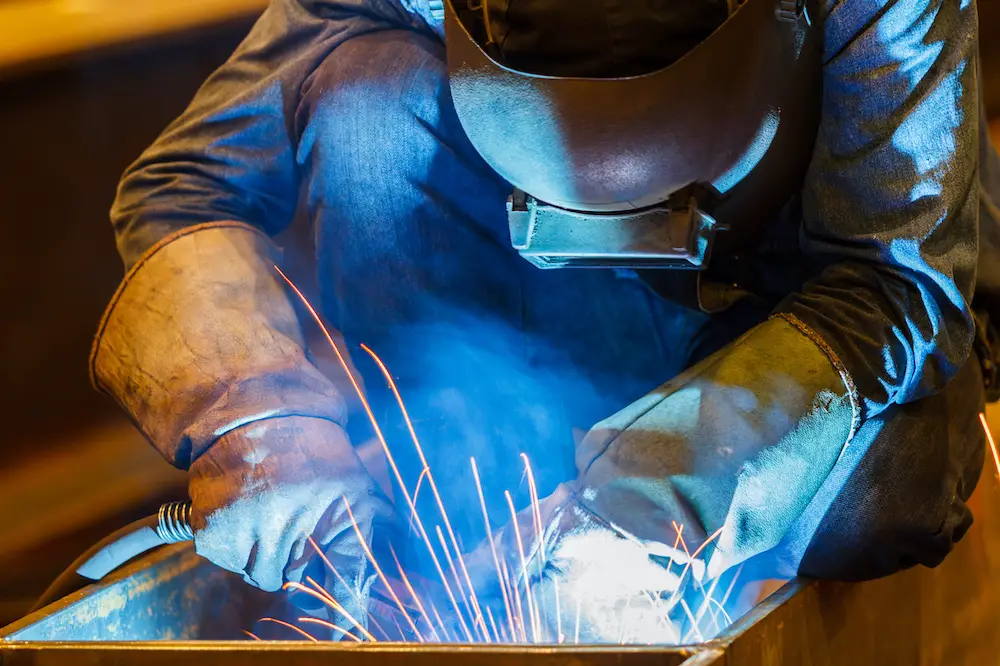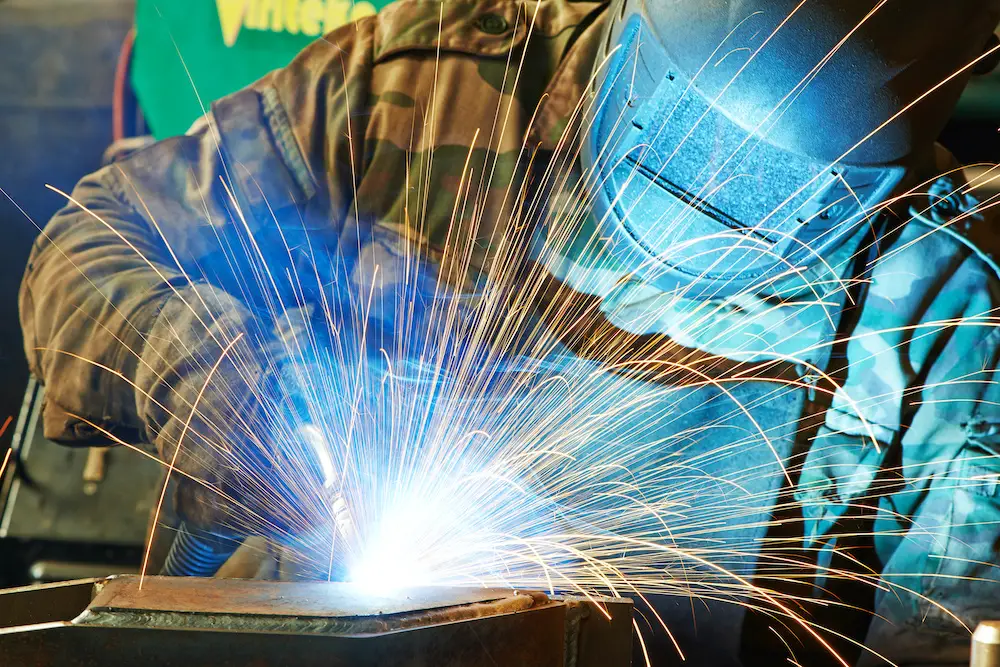Learning how to weld aluminum with a MIG welder is not rocket science.
However, like any craft, it requires a specific skill set that varies from welding other metals.
For starters, it is recommended that you have some prior experience when it comes to MIG welding steel.
This is important because aluminum, in its pure form, is a soft metal.
Additionally, you will be working with a higher temperature, as aluminum’s melting point is much higher than steel.
How To Weld Aluminum With a MIG Welder
As mentioned, aluminum is quite “soft,” making it one of the most versatile materials to work with.
Still, this can lead to the burn-out effect where the weld puddle can sweep through the metal workpiece you are working with.
Coming back to the main question, we have put together a list of MIG welding aluminum tips to get you started on your journey.
1. Metal Thickness Matters
The thickness of the metal really matters when it comes to learning how to weld aluminum with MIG.
Aluminum that is either 14-gauge or thicker (approximately up to 18-gauge) can be easily welded with the help of a MIG welder.
This means that the can used to contain the soda you consumed with your last meal is actually MIG weld-able.
On the other hand, if the aluminum you are welding is thinner than a 14-gauge, it will need to be welded with a TIG welder instead.
2. Watch Out for Oxidization
One of the most commonly occurring issues when using a MIG welder to weld aluminum is oxidization.
It is important that the user thoroughly clean the surface of the metal that is to be welded, taking special care into removing any lubricating elements.
The most common tool used for degreasing is a stainless-steel wire brush, available in a handheld model and a cup-shaped one.
Also, make sure to avoid cross-contamination by keeping your wire brushes separate for different metals.
The process of oxidization can hamper your welding by preventing the metal pieces from joining with one another.
The reason behind this is that the oxide itself has a melting point that is double that of aluminum.
3. Appropriate Shielding Gas for Aluminum
If you have welded steel with a MIG welder before, you will know that the shielding gas required is a combination of CO2 (25%) and argon (75%).
In learning how to weld aluminum with a MIG welder, you will find that you need to use pure argon gas with a 20- to 30-cubic feet per hour flow rate.
The type of gas you use determines the depth of penetration you require.
It is essential to use the recommended gas for each metal to get the best results from your welding.

4. Welding Travel Speed
One of the MIG welding aluminum tips consists of choosing the right process and speed of welding.
The most preferred method is spray welding, which allows for transferring molten metal in a relatively smoother yet faster way.
This is because the deposition rate in this mode is high.
As a general rule of thumb, when welding aluminum with a MIG welder, stick with the same voltage as you would in steel MIG welding.
Then, increase your travel speed by at least double.
As the deposition rate is high, chances are, you will naturally be moving at a faster speed.
Therefore, control is critical because there is a fast transfer of high heat going on.
Trust the welder to do its job of spraying the tiny particles into the welding puddle. At the same time, focus on your travel speed, voltage levels, and the shielding gas mixture.
5. Relevant Spool Gun
If you are using a wire feed welder to MIG weld aluminum, you will need a relevant spool gun to get the job done.
Unlike mild steel, you cannot just directly insert the aluminum wire into the cable liner.
This is primarily because the wire is not stiff enough and will start to coil and form a bird’s nest within the liner.
To ensure the smooth running of your aluminum wire, you need to use a spool gun.
These have a smaller capacity and can typically hold up to one pound of wire roll. As such, they prove to be most beneficial for novice welders.
Welding Technique: Push or Pull?
When it comes to how to weld aluminum with MIG, do you push or pull?
Aluminum welding with a MIG welder requires a specific technique to ensure that the shielding gas can adequately cover the entire welding pool region.
The direction commonly applied is called the forehand or push welding direction. It applies the force at a 25-degree angle.
This system provides a more ergonomic stance of welding, especially for those welding from a distance.
The pushing direction allows for the formation of much flatter and wider bead formation without causing deeper penetrations within the metal body.
Additionally, you also get better shielding gas coverage, which helps cool down the welding pool as you move forward.
Common Occurring Problems
Like any craft, you are likely to come across specific problems you may need to troubleshoot and address before moving forward with your work.
Here is a list of potential troubles to look out for:
Melt Throughs
If your base metal is overheated, you may face some melt through.
In this case, the best course of action would be to increase your speed or spread out the heat being generated by moving around on your base metal.
Untidy Welds
Untidy welds are common when utilizing the drag technique or the wrong shielding gas.
A Distorted Contact Tip
If you don’t maintain an adequate distance between the contact tip and welding pool, you may experience the burn-back effect.
Alternatively, you can have a wire pile up at the point of the inlet guide.
Conclusion
Like any metal, aluminum has its own set of distinct features that determine the proper techniques necessary for welding it.
Since aluminum is a much softer metal, it is recommended that users have some MIG welding experience with steel before welding with aluminum.
This will allow for more familiarity with the welder and, ultimately, better control over the spool gun, wire, and welding pool.

